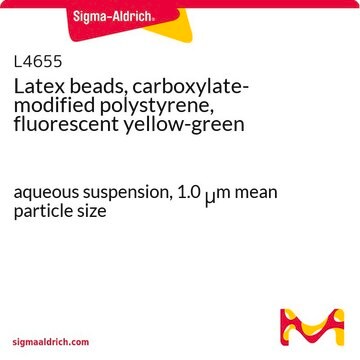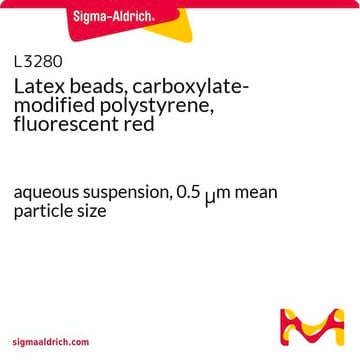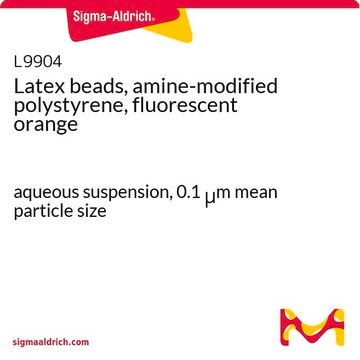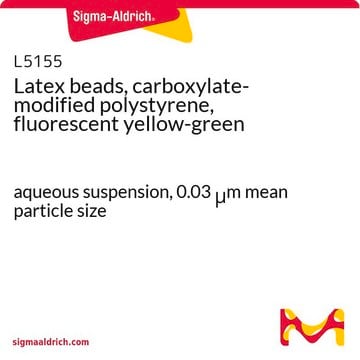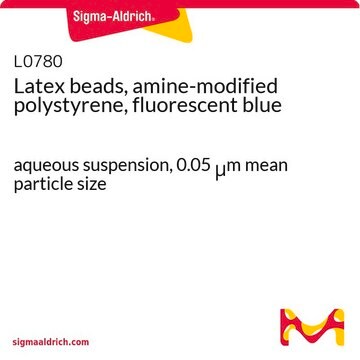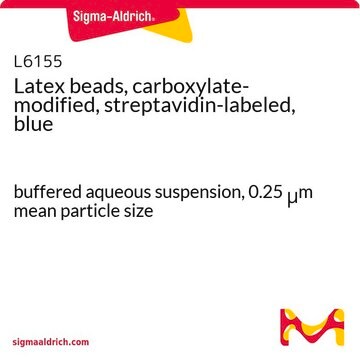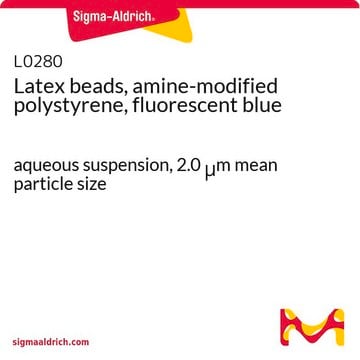LB3
Latex beads, polystyrene
0.3 μm mean particle size
Synonym(e):
Latex Microspheres, Polystyrene Beads, Polystyrene Latex Particles
About This Item
Empfohlene Produkte
Form
aqueous suspension
Zusammensetzung
Solids, 10%
Verpackung
pack of 1 mL
pack of 15 mL
pack of 2 mL
Mittlere Partikelgröße
0.3 μm
Suchen Sie nach ähnlichen Produkten? Aufrufen Leitfaden zum Produktvergleich
Allgemeine Beschreibung
Anwendung
- in latex particle recovery and size distribution studies
- as a component of the colloidal suspensions for light extinction spectroscopy
- in the quantification of microvesicles by high-sensitivity flow cytometry
Lagerklassenschlüssel
10 - Combustible liquids
WGK
WGK 3
Flammpunkt (°F)
Not applicable
Flammpunkt (°C)
Not applicable
Analysenzertifikate (COA)
Suchen Sie nach Analysenzertifikate (COA), indem Sie die Lot-/Chargennummer des Produkts eingeben. Lot- und Chargennummern sind auf dem Produktetikett hinter den Wörtern ‘Lot’ oder ‘Batch’ (Lot oder Charge) zu finden.
Besitzen Sie dieses Produkt bereits?
In der Dokumentenbibliothek finden Sie die Dokumentation zu den Produkten, die Sie kürzlich erworben haben.
Kunden haben sich ebenfalls angesehen
Unser Team von Wissenschaftlern verfügt über Erfahrung in allen Forschungsbereichen einschließlich Life Science, Materialwissenschaften, chemischer Synthese, Chromatographie, Analytik und vielen mehr..
Setzen Sie sich mit dem technischen Dienst in Verbindung.

